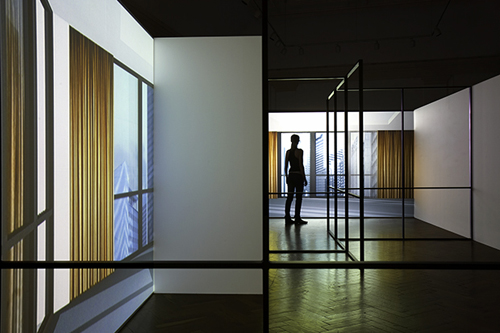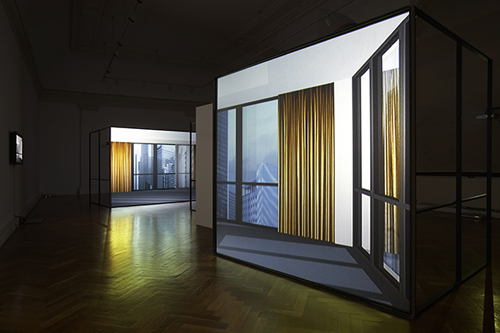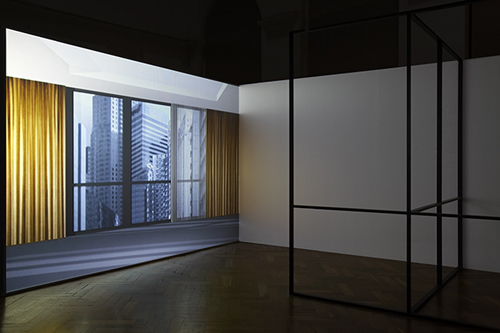[2007] Executive Office (Contemporary Modern)
Aluminum construction, painted chipboard, two transparent projection screens, three computer-generated animations transferred to DVD, one 16:9 monitor
1200 x 500 x 225 cm
Executive Office (Contemporary Modern)—as part of the project Power Play—investigates power structures and the social imagery of architecture established in our society through their patterns of use in the film industry. The project focuses on the cinematic establishing shots of stereotypical postmodern high-rises and multi-national big-business headquarters, and the strategies of corporate architecture and design. These filmic settings become symbolic backgrounds and are used to define the identities of the depicted structures: architecture as a mirror of social and economic power. For the project, a computer-generated model—one based on various information and elements of modern architecture—was designed and transferred into an accessible installation, where real and fictional architectural elements overlap, in order to make the structure and effects of mediatized architecture visible.
"[...] Nimmerfall plays within a field the parameters of which were set mid-last century by McLuhan. Knowing well that the "medium is the message," Nimmerfall blows open the space of televisual contrivance, riffing on the faux architecture of the Hollywood imagination. [...] She makes phenomenal McLuhan's claim, "With TV, the viewer is the screen. He is bombarded with light impulses that James Joyce called the 'Charge of the Light Brigade' that imbues his 'soulskin with subconscious inklings'." Humans moving through [the installations] become layered in the instant: they are sandwiched by the architecture of the video projection and images floating in space. Viewers walk in, around, and through the constructed space of each projection as though walking through a Hollywood set. Nimmerfall's "space-time situations" bear an ontology of the screen. Hers is more existential decree then avant-garde promise: we are screens that look at screens within an architecture of screens. Screens make us who we are. [...]" - Charissa Terranova
< Index



